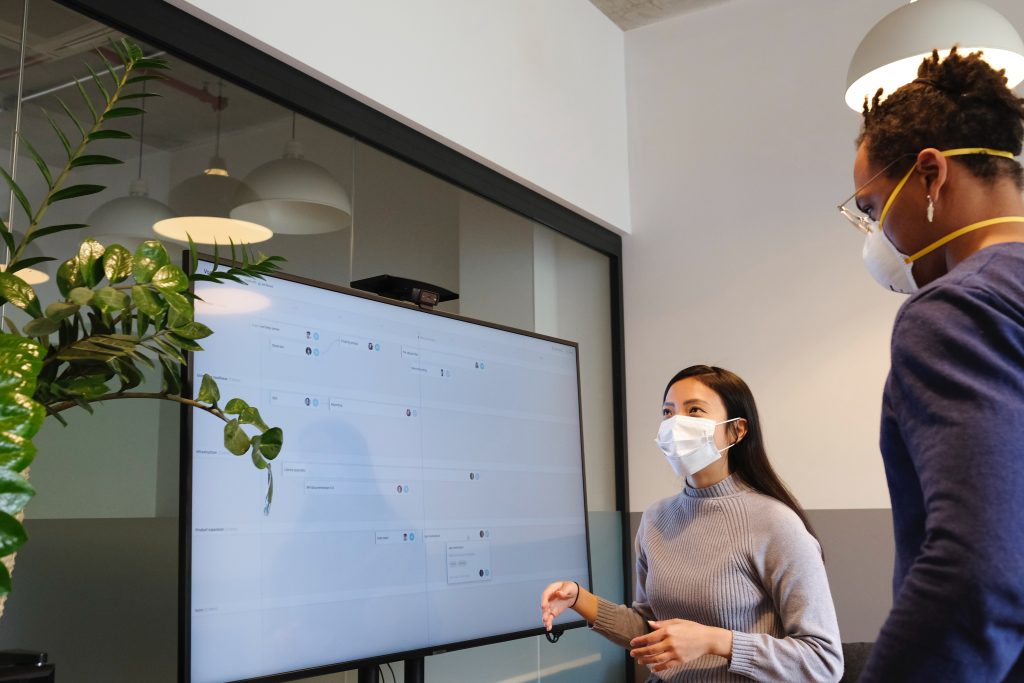
 With the Covid-19 pandemic continuing to flare around the world, it’s been said that 2020 has also brought a mental health pandemic. The disruptions in daily life, massive job losses, the doubt and uncertainty about if and when things will ever get back to normal, has led to a population that is more anxious, worried and highly stressed. In addition, many racialized people have complicated feelings about the new focus on systemic discrimination in many workplaces. On the one hand, many Black, Indigenous, and people of colour (BIPOC) employees appreciate the long-overdue acknowledgement of the challenges that they have been dealing with at work. Yet, on the other hand, many of the conversations around racism and discrimination are difficult, may fuel backlash, and can be triggering and retraumatizing.
With the Covid-19 pandemic continuing to flare around the world, it’s been said that 2020 has also brought a mental health pandemic. The disruptions in daily life, massive job losses, the doubt and uncertainty about if and when things will ever get back to normal, has led to a population that is more anxious, worried and highly stressed. In addition, many racialized people have complicated feelings about the new focus on systemic discrimination in many workplaces. On the one hand, many Black, Indigenous, and people of colour (BIPOC) employees appreciate the long-overdue acknowledgement of the challenges that they have been dealing with at work. Yet, on the other hand, many of the conversations around racism and discrimination are difficult, may fuel backlash, and can be triggering and retraumatizing.

 Despite the recent good news regarding vaccines, there is still a long way to go before they are produced and distributed in an impactful way. In the meantime, experts are concerned about the mental health of Canadians during the first full COVID-19 winter. Isolating during the summer months is one thing, but with the weather turning much colder and the days much shorter, combined with a resurgence of the pandemic, there’s a sense of dread over what could be “a long, dark winter.”
Despite the recent good news regarding vaccines, there is still a long way to go before they are produced and distributed in an impactful way. In the meantime, experts are concerned about the mental health of Canadians during the first full COVID-19 winter. Isolating during the summer months is one thing, but with the weather turning much colder and the days much shorter, combined with a resurgence of the pandemic, there’s a sense of dread over what could be “a long, dark winter.”
But even before the (anticipated) mental health pandemic, mental health problems were a leading cause of disability in Canada. During any given week over 500,000 Canadian employees are unable to work due to mental illness.
Almost half of all working Canadians (47%) identify their work as the most stressful part of their day, while 82% of employees with mental health issues indicate that it negatively impacts their work. One-fifth of all Canadians — over 7 million people — experience a mental illness every year, yet only half, 1 in 10 Canadians, will seek treatment from the available health services for mood and anxiety disorders.
 What health professionals have known for a while, but the general public may not be as aware of, is the profound link between our mental and physical health. There are direct associations between perceived stress at work and certain types of cancer (i.e., lung, colon, rectum, stomach, and lymph tissue), while long-term stress increases the risk of developing coronary heart disease by over 150%. These are but two examples of a long list of physical health risks due to prolonged mental stress.
What health professionals have known for a while, but the general public may not be as aware of, is the profound link between our mental and physical health. There are direct associations between perceived stress at work and certain types of cancer (i.e., lung, colon, rectum, stomach, and lymph tissue), while long-term stress increases the risk of developing coronary heart disease by over 150%. These are but two examples of a long list of physical health risks due to prolonged mental stress.
While there has been significant progress in the stigma and discrimination surrounding mental health, there is still a long way to go. Not only is there the Public Stigma — the reaction of the general public and society to people with mental illness — but there is also the Self-Stigma or the perception and prejudice that people with mental illness have about themselves.
People who are struggling with mental health issues may feel that they have been ignored by their employers. They may feel ashamed of their mental health issues, which can be compounded by a fear that they will be perceived as weak and unable to do their job well. This can lead to further distress because that person is also concerned with losing their livelihood.
However, employers can play a major role in preventing psychological harm and supporting positive mental wellness. The National Standard of Canada for Psychological Health and Safety in the Workplace (the Standard), is a voluntary set of guidelines, tools, and resources to help employers and organizations create and maintain mentally healthy workplaces. The Standard — created by the Mental Health Commission of Canada and launched in 2013 — is the first initiative of its kind in the world.
The Standard provides a framework for employers to assess the current state of their workplace, and also set objectives and take action to implement or enhance workplace programs, benefits, policies and training. Statistics show that employees who experience depression but work for an organization that has implemented the Standard, miss significantly fewer days of work (7.4 days/year) than those whose organization is not implementing the Standard (12.5 days/year).
While the stigma associated with mental illness is indeed changing, there are still workplaces that have made little to no investment in initiatives that promote positive workplace mental health.
But giving mental illness the attention it deserves by investing in employee mental health not only reduces time away from work, but many studies have shown that employees are more creative and able to achieve higher levels of job performance when they are in mentally healthy work environments.
For more ideas about what you can do to support employees and/or co-workers at work who are coping with mental health problems, you can take a look at my complete list of mental health blog posts, or click the selected links below to see some of my most read blog posts concerning mental health in the workplace.
- Bouncing Back from the Pandemic (and Related Grief)
- Do’s and don’ts – how to be mindful of mental health in the workplace
- Mental Health – Making it Work in the Workplace
- Calling in Sad (or Sick) to Avoid Workplace Problems?
- How to Get Back to Work While Working Through a Death or Other Hard Events
- Resilience – If You Don’t Think You Have It, You Can Get It
If you’re contemplating any work-related changes or improvements, I invite you to reach out today for a free and confidential initial phone consultation by phone, email, or via direct message on Twitter, Facebook or LinkedIn.
More than career coaching, it’s career psychology®.
I/O Advisory Services – Building Resilient Careers and Organizations.™





